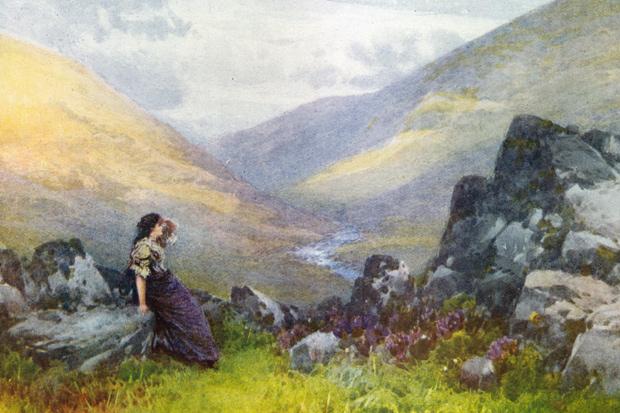‘No, no’ I said, when The Spectator’s literary editor rang up, ‘I’m sure you must be able to find someone who really wants to read another postcolonial analysis of the figure of the North African in English literature.’ But the book turned out to be about the other kind of moor, so I said yes, though not without some anxiety that it might be like Eeyore’s Gloomy Place: Rather Boggy and Sad.
Luckily, William Atkins’s book, though it acknowledges that moors can be bleak, isolated and unforgiving, especially for permanent residents and those scraping a living off the land, is on the whole quite cheerful. It is a series of affectionate local history sketches, strung together as a journey from Bodmin Moor in Cornwall to Otterburn in Northumberland (Wales and Scotland do not feature).
He begins with his GCSE geography project on the moor behind his parents’ house in Bishop’s Waltham in Hampshire where he spent his ‘dusks after school and … before-school dawns, and every weekend, and every holiday’, watching the wildlife and monitoring the water level. It’s the picture of an odd teenager, but the self-revelation this seems to promise doesn’t really emerge. Once the GCSEs are behind, the autobiographical element is minimal, and Atkins preserves a wary, detached voice.
As usual with travel books, the landscape conjures up our old friends — the man with a dog, the woman in the church, and so on — but one doesn’t feel the author warming to them and they don’t emerge as individuals. He consults the odd scientific expert, the occasional local historian, but he always seems quite glad to get away from them to his solitary, exceptionally disgusting picnics (‘I rested on a dais of moss . . . and ate six Snack-Sized Cornish Pasties’; ‘I sat down on the rocky beach and had a King-Size Pork Pie and a sachet of Orange-Flavoured Capri Sun’; ‘From the pocket of my rucksack I took some raisins, a marshmallow, a date, a Fruit Pastille and an orange’.)
Much more vivid are his encounters with the dead. Some of these are well-known, such as Ian Brady, Sylvia Plath, Henry Williamson, W.H. Auden, the mad Vicar of Warleggan and Emily Brontë — rather a mixed bunch you might well think, and not the kind of people everyone would choose as holiday companions, but despite this their encounters with various moors are sympathetically integrated into Atkins’s own journeys.
He disinters forgotten murderers and dim poets, and writes convincingly about geology and archaeology. There is a very memorable account of the building of Dartmoor prison by Napoleonic prisoners of war. Old battles from Otterburn to Kinder Scout are remembered. Traces of old ways of life and lost communities are found in abandoned mine-workings, old churches, Celtic shrines and Roman camps. Excerpts from the heart-rending journal of an Exmoor farmer, William Hannam, animate the story of Victorian efforts to create productive farmland from wet and acid waste. It was Atkins’s bad luck that he did some of his research trips in the record-breakingly soggy summer of 2012, but The Moor is deeply enjoyable, a book worth reading and re-reading, sun or shower, indoors or out.





Comments